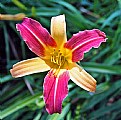
James W.

Christine A.

Salvador L.

Ayan M.

Michele B.

Moises L.

a. S.

Gregory M.
 James W. |
 Christine A. |
 Salvador L. |
 Ayan M. |
 Michele B. |
 Moises L. |
 a. S. |
 Gregory M. |
 |
|
Your photo sharing community! |
|
||||||||||||||
|
| Log in to post a response to this question |
Return To Photography Forum Index |
|
| FAQ | Terms of Service | Donate | Site Map | Contact Us | Advertise | Copyright ©2013 Absolute Internet, Inc - All Rights Reserved |